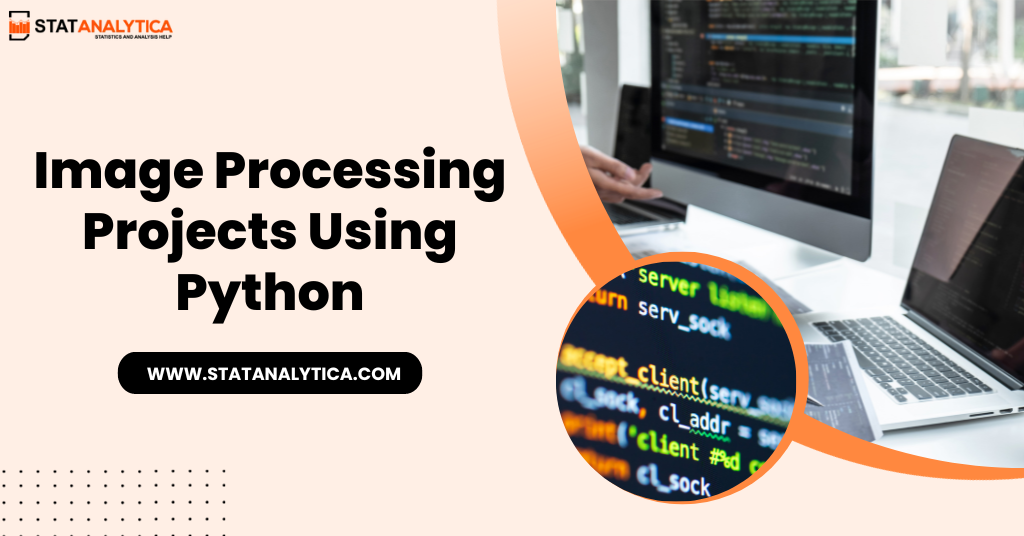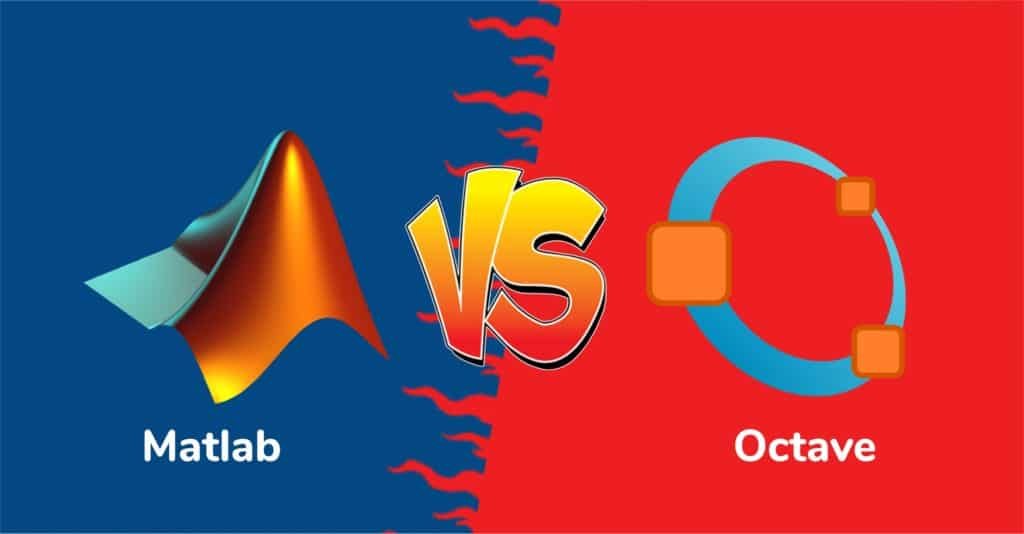In today’s world, Image Processing Projects Using Python have become an integral part of technological advancements. Image processing involves manipulating images to extract information or enhance their visual characteristics. Python’s versatility and powerful libraries like OpenCV and Pillow make it a go-to choice for such projects due to its simplicity and extensive support.
In this blog, we delve into the realm of Image Processing Projects Using Python, exploring its basics, popular libraries, and the significance of Python in this field. We’ll showcase over 51+ innovative projects categorized into beginner, intermediate, and advanced levels, offering a comprehensive learning experience.
Stay tuned with us to discover a plethora of intriguing Image Processing Projects Using Python, along with valuable tips for successful project completion and strategies to overcome challenges encountered in this exciting domain.
What Is Image Processing?
Table of Contents
Image processing involves working with images to enhance, modify, or extract information from them using computers. It’s like giving a makeover to pictures, making them clearer, adjusting colors, or even identifying shapes within them. Imagine it as tinkering with photos on a computer to make them look better or to find specific things within them.
This technology helps in various tasks like improving medical images for better diagnosis, enhancing satellite images for weather forecasts, or even recognizing faces in photos for security purposes. By using computers to understand and manipulate images, image processing makes tasks easier, quicker, and more accurate, benefiting different fields like healthcare, surveillance, entertainment, and more.
What Are Image Processing Projects Using Python?
Image Processing Projects Using Python are like exciting adventures where you use Python—a computer language—to explore and change pictures in cool ways. With Python, you can do lots of things with images, like fixing their colors, finding shapes, or even creating fun effects in photos.
Python makes it easy to work with images by providing special tools called libraries—like OpenCV or Pillow—that help you do all sorts of picture tricks. These projects using Python let you play with images, learn new things, and create useful stuff like apps that recognize faces or make images clearer, which can be helpful in fields like medicine or security. Overall, these projects let you be creative with pictures using the power of Python!
Popular Python Libraries for Image Processing
Popular Python Libraries for Image Processing include OpenCV, Pillow, scikit-image, Matplotlib, and NumPy.
- OpenCV: Helps with image processing tasks like object detection and face recognition.
- Pillow: Useful for basic image manipulation such as resizing, cropping, and adding filters.
- scikit-image: Offers various algorithms for image processing, including segmentation and feature extraction.
- Matplotlib: Helps in visualizing and displaying images and their data.
- NumPy: Enables efficient handling of numerical arrays, essential for processing image data pixel by pixel.
Importance Of Using Python for Image Processing Projects
Here are some importance of using python for image processing projects:
1. Python’s Simplicity
Python’s user-friendly syntax and readability make it easy for beginners to grasp and start working on image processing projects without extensive programming knowledge. Its simplicity reduces development time and enhances the learning curve for newcomers.
2. Versatility in Libraries
Python offers a vast array of libraries specifically designed for image processing tasks. Libraries like OpenCV, Pillow, and scikit-image provide comprehensive functionalities, enabling developers to access numerous tools and techniques required for manipulating images efficiently.
3. Community Support
There is a sizable and vibrant development community for Python. This expansive network facilitates easy access to tutorials, forums, and resources dedicated to image processing. Community support aids in troubleshooting issues, sharing knowledge, and fostering innovation within the field.
4. Cross-platform Compatibility
Python’s cross-platform compatibility ensures that image processing projects developed on one operating system can seamlessly run on others, reducing compatibility issues and enabling wider accessibility.
5. Integration Capabilities
Python’s flexibility allows seamless integration with other languages and technologies, enabling developers to incorporate image processing functionalities into larger applications or systems effortlessly. Its ability to interface with various tools streamlines workflow and enhances project scalability.
51+ Innovative Image Processing Projects Using Python In 2024
In this section, we provide 51+ innovative image processing projects using python in 2024:
I. Beginner-Level Image Processing Projects Using Python
1. Grayscale Conversion
Convert a color image to grayscale using OpenCV or PIL libraries, displaying both images side by side for comparison. Explore the impact on image quality and file size after conversion.
2. Image Resizing
Develop a Python program that resizes an image to specified dimensions entered by the user, ensuring aspect ratio preservation and displaying the resized image.
3. Image Rotation
Build an application that rotates an image by a user-defined angle (90, 180, 270 degrees) and exhibits the rotated image along with an option to save it.
4. Image Cropping
Create a script that allows users to input coordinates for cropping a specific region from an image, showcasing both the original and cropped sections.
5. Image Flipping
Design a Python script to perform horizontal and vertical flips on an image, visualizing the original and flipped images side by side.
6. Image Blurring
Implement Gaussian blur or average blur on an image with user-controlled intensity, displaying the blurred image and allowing users to adjust the blur effect.
7. Edge Detection
Apply Canny or Sobel edge detection algorithms to highlight edges in an image, displaying the original image alongside the detected edges for comparison.
8. Color Detection
Enable users to select a color and mask the image to display only the chosen color while presenting both the original and masked images.
9. Image Thresholding
Develop an application that allows users to experiment with different thresholding techniques for segmenting regions within an image, displaying the thresholded image.
10. Histogram Equalization
Implement histogram equalization to enhance image contrast, showcasing the impact on both grayscale and colored images.
11. Corner Detection
Utilize Harris Corner Detection to identify and mark corners in an image, providing visual markers on the original image.
12. Template Matching
Create a script to perform template matching and visualize the matched region within an image.
13. Morphological Transformations
Implement dilation and erosion operations on an image, displaying the transformed images for each operation.
14. Image Arithmetic
Develop a script for performing arithmetic operations on two images (addition, subtraction, bitwise operations) and visualize the resulting image.
15. Face Detection
Utilize Haar cascades for face detection and display the image with detected faces outlined by bounding boxes.
16. Image Watermarking
Apply a watermark (text or logo) to an image at a specified position, displaying the original image with the added watermark.
17. Image Stitching
Create an application to stitch multiple images into a panoramic view, displaying the stitched panoramic image.
18. Image Compression
Implement JPEG compression on an image with varying compression levels, comparing the original and compressed images’ quality and file size.
II. Intermediate-Level Image Processing Projects Using Python
19. Image Segmentation
Develop an algorithm using clustering techniques (like K-means) to segment an image into distinct regions based on pixel intensity, showcasing the segmented regions alongside the original image.
20. Image Denoising
Implement a Python script using techniques such as non-local means denoising or wavelet transforms to reduce noise in an image while preserving important details.
21. Object Detection
Utilize deep learning frameworks like TensorFlow or PyTorch to build an object detection model that detects and labels specific objects within an image, displaying the image with identified objects and bounding boxes.
22. Image Registration
Create a program that aligns and registers two or more images of the same scene taken from different viewpoints or times, showcasing the registered images for comparison.
23. Image Inpainting
Develop an algorithm that reconstructs missing parts of an image by using surrounding pixels or deep learning-based approaches, demonstrating the restored image.
24. Panorama Generation
Build an application that automatically stitches multiple images together to create a panoramic view, allowing users to select images and displaying the resulting panorama.
25. Image Deblurring
Implement deblurring techniques such as Wiener deconvolution or deep learning-based methods to remove blur from images, visualizing the deblurred images.
26. Texture Analysis
Create a program that extracts texture features from an image using methods like Gabor filters or Local Binary Patterns (LBP) and displays the texture information.
27. Image Morphing
Develop a Python script to morph one image into another gradually, showcasing the transition between the two images using interpolation techniques.
28. Super-Resolution Imaging
Implement a deep learning-based super-resolution model to enhance image resolution, comparing low-resolution and super-resolved images.
29. Background Subtraction
Create an application that detects and removes the background from a video sequence or series of images, displaying the extracted foreground objects.
30. Image Style Transfer
Use neural style transfer techniques to apply the artistic style of one image onto another, showcasing the style-transferred image.
31. Semantic Segmentation
Utilize deep learning models like U-Net or FCN for pixel-level semantic segmentation to identify and label objects within an image, visualizing the segmented objects.
32. Medical Image Processing
Develop algorithms for medical image analysis tasks such as tumor detection, MRI image enhancement, or X-ray image classification, displaying results and analysis.
33. Image-to-Image Translation
To convert images from one domain to another (such as day to night), use conditionally generative adversarial networks (cGANs) and display the translated images.
34. Image Synthesis
Generate artificial images using Generative Adversarial Networks (GANs) or Variational Autoencoders (VAEs), displaying the synthesized images.
35. Image Forgery Detection
Create a system using digital image processing techniques to detect forged or manipulated regions within an image, highlighting the tampered areas.
36. Multi-modal Image Fusion
Develop an application to fuse images from different modalities (e.g., infrared and visible light) to create a comprehensive representation, displaying the fused image.
III. Advanced-Level Image Processing Projects Using Python
37. Generative Adversarial Networks (GANs) for Image Generation
Implement a GAN model to generate realistic images, exploring architectures like DCGAN or StyleGAN and visualizing the generated images.
38. Image Captioning with Deep Learning
Develop a neural network model that generates descriptive captions for images, combining CNNs for feature extraction and LSTMs for language generation.
39. Medical Image Segmentation with Deep Learning
Use deep learning techniques like U-Net or Mask R-CNN to segment and label structures in medical images such as MRI or CT scans, displaying segmented regions.
40. Real-Time Object Tracking
Build a system that performs real-time object tracking in videos using algorithms like SORT (Simple Online and Realtime Tracking) or DeepSORT, displaying tracked objects.
41. Deep Image Prior for Image Restoration
Explore the concept of using neural networks without training data (Deep Image Prior) for image restoration tasks like denoising, deblurring, or inpainting, visualizing restored images.
42. Attention Mechanisms in Image Processing
Implement attention mechanisms in image processing tasks such as image classification or object detection to improve model performance and visualize attention maps.
43. Adversarial Attacks and Defenses in Image Recognition
Investigate adversarial attacks against deep learning models and develop defense mechanisms to protect models from such attacks, showcasing attacked and defended images.
44. Multi-Modal Image Analysis
Create models that analyze and fuse information from multiple modalities (e.g., images and text) using techniques like multimodal embeddings or fusion networks, displaying the fused information.
45. Few-Shot Learning for Image Classification
Develop models capable of learning from a small number of examples for image classification tasks, showcasing classification results on limited training data.
46. Image-to-Image Translation with Conditional GANs
Use conditional GANs to perform complex image-to-image translations, such as translating satellite images to maps or day to night scene translations, displaying translated images.
47. 3D Image Reconstruction from 2D Images
Explore methods for reconstructing 3D structures from multiple 2D images, such as Structure from Motion (SfM) or Multi-View Stereo (MVS), visualizing reconstructed 3D models.
48. Domain Adaptation for Image Processing
Implement domain adaptation techniques to transfer knowledge learned from one domain to another, demonstrating adaptation between different datasets or environments.
49. Saliency Detection and Image Attention
Develop models to detect and highlight salient regions in images using techniques like saliency maps or attention mechanisms, visualizing identified regions.
50. Deep Learning for Image Compression
Investigate deep learning-based methods for image compression, exploring models like autoencoders or neural network-based codecs, comparing compressed images at various bit rates.
51. End-to-End Image Super-Resolution
Build end-to-end deep learning models for single-image super-resolution without pre-processing, comparing the performance with traditional methods and displaying high-resolution images.
52. Image Synthesis with Variational Autoencoders (VAEs)
Implement VAEs for image generation and manipulation, exploring latent space interpolation and displaying synthesized images.
53. Graph Neural Networks for Image Analysis
Utilize graph neural networks (GNNs) for tasks like image segmentation or object detection, incorporating relational reasoning and visualizing network predictions.
54. Explainable AI for Image Models
Develop methods to interpret and explain decisions made by complex image processing models, showcasing visual explanations for model predictions or classifications.
Read More
Tips For Successfully Completing Image Processing Projects Using Python
Here are some tips for successfully completing image processing projects using python:
Tip 1: Plan and Understand Requirements:
Before starting, outline project goals, required tools, and steps needed. Clear planning sets direction and manages tasks efficiently.
Tip 2: Break Down Tasks
Divide the project into smaller steps like image loading, filters, or recognition. This approach focuses on one aspect at a time for better progress tracking.
Tip 3: Explore Libraries and Resources
Know Python’s image processing tools and tutorials. Understanding resources maximizes tool functionalities, saving time during development.
Tip 4: Test Iteratively
Test code as you progress, catching errors early. Iterative testing identifies and fixes issues promptly, preventing problems from accumulating.
Tip 5: Document and Review
Maintain detailed documentation of code and modifications. Regular code review enhances readability and makes it easier for others to understand and build upon your work.
Challenges Face In Image Processing Projects Using Python And Overcome Techniques
In the realm of image processing projects using Python, researchers encounter several challenges that impede progress and efficacy. Addressing these obstacles is vital for devising effective strategies. Here are some of the challenges faced in image processing projects using Python, along with techniques to overcome them:
1. Computational Complexity
Processing large volumes of image data often leads to computational bottlenecks and slower execution, especially with complex algorithms.
Overcome Technique
- Utilize parallel processing techniques like multiprocessing or distributed computing.
- Optimize algorithms and code for efficiency through libraries like NumPy and Cython.
2. Data Quality and Preprocessing
Noisy, incomplete, or inconsistent image data can hinder accurate analysis and model training, requiring extensive preprocessing efforts.
Overcome Technique
- Implement robust data augmentation methods.
- Use techniques like denoising, normalization, and data cleaning to enhance data quality.
3. Algorithm Selection and Tuning
Choosing appropriate algorithms and fine-tuning their parameters for specific image processing tasks can be challenging due to the wide array of available options.
Overcome Technique
- Conduct comprehensive benchmarking and experimentation with different algorithms.
- Implement hyperparameter tuning techniques such as grid search or random search.
4. Hardware Limitations
Insufficient computational resources and hardware limitations can restrict the scope and scale of image processing tasks, affecting project feasibility.
Overcome Technique
- Use cloud-based solutions or high-performance computing resources.
- Opt for hardware acceleration using GPUs or TPUs for computationally intensive tasks.
5. Integration and Deployment
Translating developed models or algorithms into production-ready systems for real-time image processing poses integration and deployment challenges.
Overcome Technique
- Employ containerization technologies like Docker for seamless deployment.
- Use frameworks like TensorFlow Serving or Flask for model deployment and integration into applications.
Conclusion
Image processing using Python offers a powerful toolkit for manipulating images, from basic filtering to complex object recognition. Python’s libraries like OpenCV and PIL enable a wide range of projects for beginners, intermediates, and advanced developers. Its significance lies in accessibility, versatile libraries, and a vast community, supporting 51+ innovative projects in 2024.
Furthermore, challenges like computational complexity and data quality issues, solutions like algorithm optimization and utilizing cloud resources pave the way for success. By leveraging Python’s strengths and employing effective strategies, individuals can overcome obstacles and excel in image processing projects with confidence.


